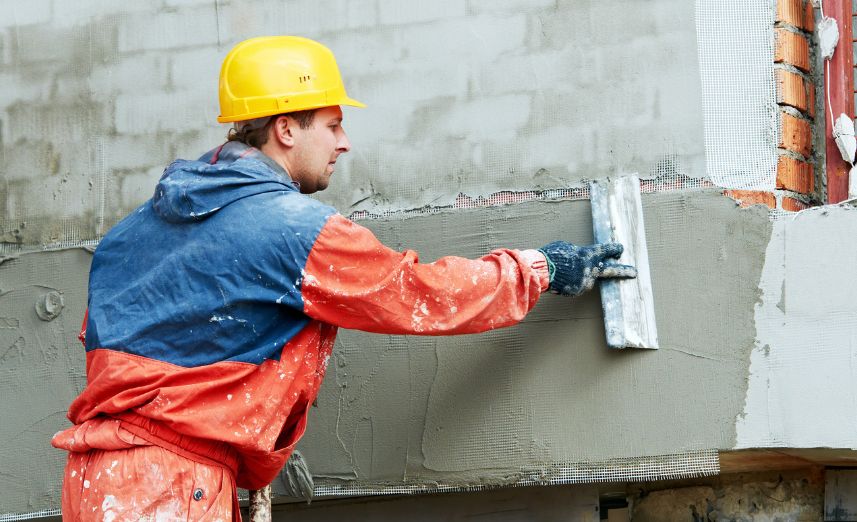The Unseen Foundation of a Flawless Home
Exceptional plastering is more than just a trade; it’s an art form. It provides the pristine canvas upon which your home’s character is built. While it’s tempting to view it as just another step in the renovation process, investing in a professional plasterer offers significant, long-lasting benefits that go far beyond a simple skim coat.
Achieve a Superior, Lasting Finish
The difference between a DIY attempt and a professional finish is immediately apparent. A skilled plasterer creates surfaces that are not only perfectly flat and smooth but also durable. This expertise ensures that your paint or wallpaper will look its absolute best, without the lumps, bumps, or hairline cracks that can spoil the final effect. A professional job is an investment in a finish that will stand the test of time.
Increase Your Property's Value
Potential buyers and valuers notice the details. Crisp, clean walls and ceilings are a clear indicator of a well-maintained property. Flawless plasterwork suggests quality and care have been taken throughout the home, which can significantly enhance its appeal and contribute positively to its market value. It’s a finishing touch that delivers a powerful first impression.
Improve Insulation and Soundproofing
Modern plastering and dry lining techniques do more than just create a smooth surface. A properly plasterboarded and skimmed wall can contribute to the thermal efficiency of your home, helping to keep it warmer in winter and cooler in summer. Furthermore, it adds a dense layer that can help to reduce noise transmission between rooms, creating a quieter and more peaceful living environment.
Address Underlying Wall and Ceiling Issues
Sometimes, a crack is more than just a crack. A seasoned plasterer can diagnose the health of your walls. They can identify and correctly address underlying issues such as damp, salt contamination, or structural movement that a less experienced eye might simply cover over. Hiring a professional ensures you’re not just getting a cosmetic fix, but a proper, long-term solution.
A Full Spectrum of Plastering Services
The term "plastering" covers a wide range of techniques and applications. The specialists on ServiceTasker offer a comprehensive array of services to meet the demands of any project, from period property restoration to contemporary new-builds. Understanding these services will help you articulate your needs when posting your job.
Skimming and Re-skimming
This is the most common interior plastering job. Skimming involves applying a thin, finishing layer of plaster to new plasterboard (dry lining) or over existing, tired plaster to create a perfectly flat, smooth surface ready for decorating. It’s the ideal solution for modernising rooms without the mess and expense of completely removing the old walls.
Dry Lining (Plasterboarding)
A fast and efficient method for creating new walls and ceilings, dry lining involves fixing plasterboard sheets to a timber or metal frame, or directly onto masonry. The joints are then taped and the entire surface is skimmed. It's a popular choice for extensions, loft conversions, and renovations due to its speed and excellent insulating properties.
Traditional Wet Plastering
Often referred to as solid plastering, this is a more labour-intensive, traditional method that involves applying multiple coats of wet plaster (typically a backing coat and a finishing coat) directly onto brickwork or blockwork. It provides an exceptionally hard-wearing, durable finish and is often essential for work on older or listed buildings.
External Rendering
Rendering is the external equivalent of plastering, providing a protective and decorative coating for the outside of your property. Professional renderers can apply various finishes, including traditional sand and cement, modern monocouche renders that come pre-coloured, textured finishes like pebble dashing, or breathable lime render for period properties.
Floor Screeding
Before you can lay tiles, laminate, or carpet, you need a perfectly level subfloor. Screeding is the process of applying a specialist cement-based mixture over a concrete base or insulation to create a smooth, flat, and durable surface, ready for your final floor covering. It’s a crucial step in any new build or extension.
Coving, Cornices, and Decorative Mouldings
The finishing touches can define a room. Many plasterers are skilled in the installation and repair of decorative elements like coving (the curved moulding that joins the wall and ceiling), intricate cornices, and ceiling roses. This work adds a touch of elegance and character, particularly in Victorian or Georgian properties.
Plaster Repair and Patching
From minor cracks and holes left by picture hooks to significant damage caused by water leaks or electrical work, a professional plasterer can seamlessly patch and repair damaged areas. Their skill lies in blending the new plaster with the existing surface to make the repair virtually invisible once painted.

